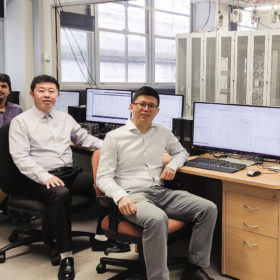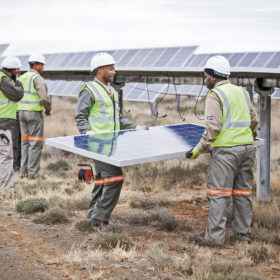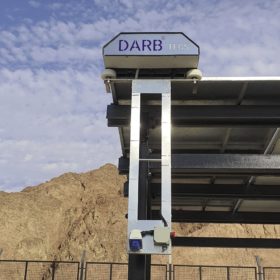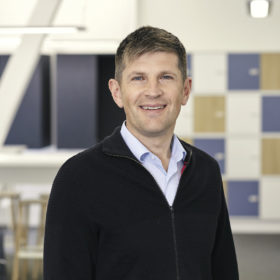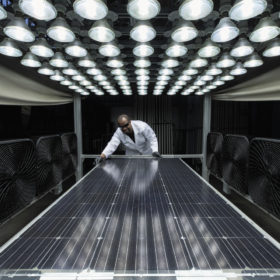In the testing loop
In northern Australia, a new hardware-in-the-loop platform is being developed to test renewable projects aggregated generation control systems before commissioning. The platform brings control hardware together with software simulations of passive components to test in real time how different configurations respond. Should the platform successfully complete its upcoming demonstration, it could help solve Australia’s current connection crisis.
Right first time
With the energy crisis putting ever more pressure on Europe to deliver on clean power, Karsten Nielsen, the CEO of Danish renewables business Greengo, takes a look at how to develop unsubsidized big solar and keep everyone onside.
Solar assistance for Ukraine
European governments and companies are donating clean energy kit and cash assistance to Ukraine, potentially benefiting neighboring countries in the post-war energy market, reports Sergio Matalucci.
Dealing with dust
Sand and dust are a PV plant operator’s worst nightmare. Performance losses due to soiling, or “the dust effect,” are a cause for innovation among O&M providers, particularly in dry and dusty regions that are otherwise ideal locations for large-scale solar installations. Yazeed Al-Mousa examines the latest robotic cleaning solutions, as well as the software and sensors that help plant operators with the tricky economic decision of when to actually start cleaning.
Power to be heard
The wide-open spaces of the Australian outback make it ripe for solar development, but doing so without the true inclusion of Indigenous communities may repeat the mistakes made by resource extraction companies in the past. However, Indigenous-led companies and an innovative new initiative are looking to put power and ownership into the hands of the land’s traditional owners, reports pv magazine Australia’s Bella Peacock.
Highway to the inflection point
Electric vehicles, both fully electric and plug-in hybrid EVs, look set to become dominant in new car sales within years in many parts of the world, but overall changes to car fleets face significant inertia. What impact will this have on the future grid, and where’s the opportunity for solar? Tristan Rayner gets behind the wheel.
Bringing space solar back to earth
The integration of solar into the rooftops of electric vehicles is an opportunity for PV, but it could also drive the development of very high-efficiency semiconductors, says Rupert Kogler, from development glazing, roof, and components at Webasto, a top 100 automotive supplier.
The problematic fairy tale of ‘Peter PAN’ files
The financial risk of investing in photovoltaic systems is increasing. This is because the yield forecasts on which profitability audits are based are increasingly too optimistic. One reason for this could be the handling of so-called PAN files, reports pv magazine Deutschland’s Marian Willuhn.
Collateral damage as conflict bites
Western sanctions imposed on the Russian economy have complicated shipments of PV equipment into the country from the European Union and elsewhere. This has prompted the Russian authorities and businesses to increase localization efforts. The long-term outlook is bright, but a short-term crunch is coming, writes Vladislav Vorotnikov.
Solar support in hazardous locations
In some of the world’s most hazardous locations, a resilient and autonomous common denominator is often found – solar energy. From offshore oil rigs to remote mine sites and the frontlines of conflict zones, solar power functions where others fail, and it does so without the need of refuelling or regular maintenance. But what makes solar such a ‘no-brainer’ that even the oil and gas industry must turn to it? And what other hazardous locations can be electrified with solar? Blake Matich reports.
